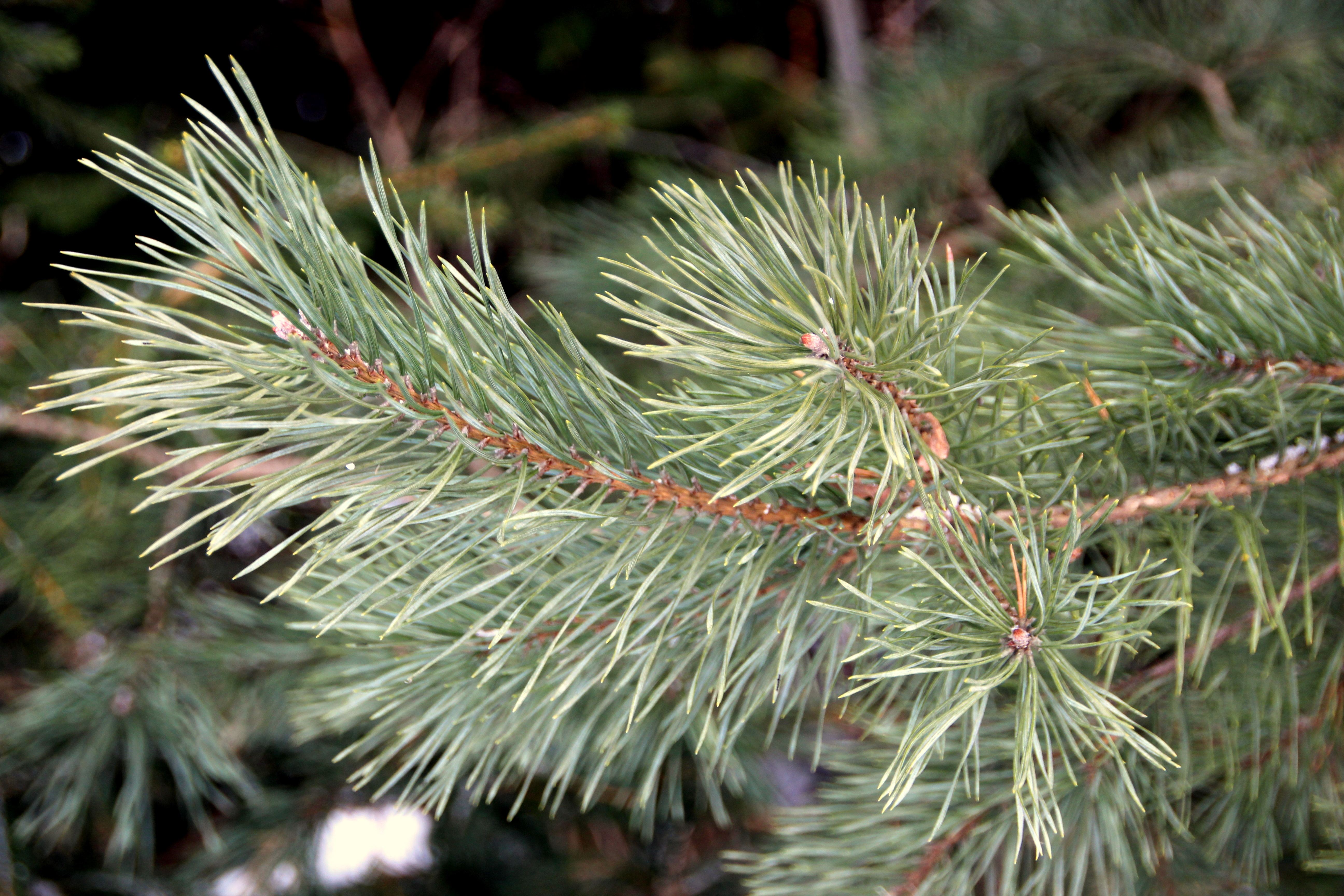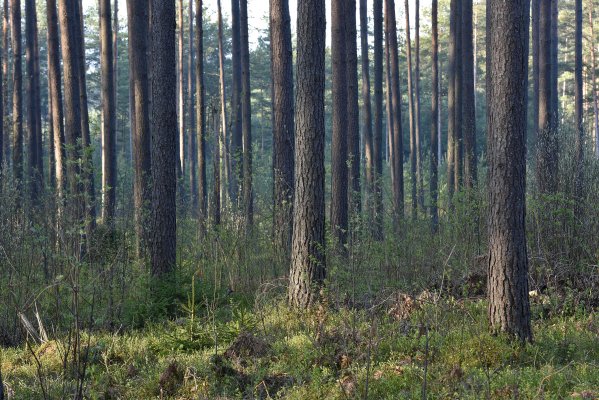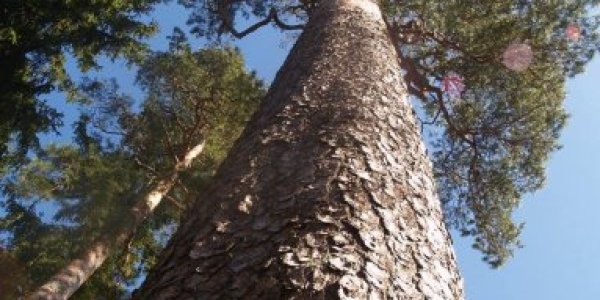The Tree of the Year - the Scots Pine
The Latvian Dendrologist Society has chosen the Scots pine (Pinus sylvestris) as the tree of the year 2017. In the forests managed by JSC "Latvia's State Forests" (LVM) pine is the most common tree species comprising 46 % of all stands.
"Mostly pines and spruces are planted in the Latvian forests. Historically, the state mostly manages coniferous forests. Much work has been done in terms of selection of these species - they grow faster and give a greater standing timber increase per hectare," says Dace Ozola, LVM Head of Forest Regeneration and Tending.
Leaves or needles

The Scots pine is a seed-bearing plant belonging to the gymnosperm sub-division of coniferous class pine family (pinaceae). In Latvia, the pine family is represented by only two local wild species: the Scots pine and the Norway spruce. Other trees of this family that are common in Latvia are foreigners - they have been imported from other regions.
The Scots pine is an evergreen tree, its leaves have transformed into needles. The needles are linear, with resin columns, 3-8 cm long; they grow in pairs at the end of spurs. On the trees, needles grow for several years.
Pine wood is resinous. The bark is peeling, at the bottom of the trunk the bark is crusty, greyish brown, but on the upper part of the tree - smooth, reddish-brown.
Cones
The flowers of this tree are homogenious: they either have stamens or a pistil. Pine is a monoecious plant since on one individual there are both male flowers (pollen carriers) and female flowers. Male flowers are located at the ends of branches, they are yellow, oval-shaped. In turn, female flowers (inflorescences) are cone-shaped macrostrobili that develop at the tops of young shoots, their colour before pollination is reddish purple.
In forest stands, pine-trees start to produce seeds at the age of 30-40 years; pine-trees bloom every 3-4 years, depending on weather conditions. Blooming takes place in late spring: in May - early June. After pollination, a roundish cone sprout is formed that starts to grow only the next year following pollination, and in July it turns into a dense, about 5-centimetre long, green cone.
From September up to November, as the seeds in the cone ripen, the cone becomes grey-brown. Only two years after pollination, pine cones gradually break open, and in late April - May seeds fall out of the cones, and are spread by wind.
In order to improve pine reforestation, the forest areas managed by LVM are restored using top quality pine seedlings cultivated from high-quality seeds obtained in "LVM Sēklas un stādi” (LVM Seeds and Plants) nurseries, leaving part of the territory for natural regeneration.
Favourable growing conditions
In Latvia, pine is the dominant tree species in pine forests, myrtillosa, vacciniosa, wet vacciniosa, sandy soils and marshlands. However, this species is the most productive in pine-spruce forests, drained mineral soils (myrtillosa mel.), drained peaty soils (myrtillosa turf. mel).
The pine root system is affected by the growing conditions. In dry places, the root consists of a long taproot, which is supplemented by a network of lateral roots, therefore the tree is capable of reaching the depths of the underground waters and it is wind resistant. In turn, in wet, peaty soils the pine does not form a taproot.
The pine has good environmental adaptability; it is able to live in both peaty bog soils and poor sandy soils. The pine is a sun-loving tree, therefore tree trunks usually grow straight upwards - towards the sun.
The height and trunk quality depend on the growing conditions. The average height of the tree on average reaches 30 metres. In the most favourable soil - in slightly clayey sand soil - it can reach a height of more than 40 metres.
In Latvia, pine is the dominant tree species in pine forests, myrtillosa, vacciniosa, wet vacciniosa, sandy soils and marshlands. However, this species is the most productive in pine-spruce forests, drained mineral soils (myrtillosa mel.), drained peaty soils (myrtillosa turf. mel).
The pine root system is affected by the growing conditions. In dry places, the root consists of a long taproot, which is supplemented by a network of lateral roots, therefore the tree is capable of reaching the depths of the underground waters and it is wind resistant. In turn, in wet, peaty soils the pine does not form a taproot.
The pine has good environmental adaptability; it is able to live in both peaty bog soils and poor sandy soils. The pine is a sun-loving tree, therefore tree trunks usually grow straight upwards - towards the sun.
The height and trunk quality depend on the growing conditions. The average height of the tree on average reaches 30 metres. In the most favourable soil - in slightly clayey sand soil - it can reach a height of more than 40 metres.
Forestry and economy
In the Baltic region, pines have particularly straight trunks, a relatively narrow pyramidal crown, slender branches and high-quality wood. Because of these characteristics, already since the 17th and 18th century high-quality pine wood is exported from Latvia to many countries through the port of Riga, and shipbuilders all over the world praise the Riga pine as an excellent "mast pine".
Wood has long been a very versatile natural material, it is environmentally friendly and easy to process - wood products are cosy, warm, they are pleasant to the touch. Resinousness of pine wood is durable and resists moisture well, it is a soft, elastic, moderately fragile, straight-fibred, with shine, smells of resin. It is resistant to rot, easy to chop and process with a variety of cutting tools. Pine wood or its products may be re-used as a carbon-neutral source of energy, thereby increasing the efficiency of the use of wood.
Vermin
Unfortunately, there is a number of intentional and unintentional offenders also for high-quality pine-trees. Large areas of stands of different age are flooded by beavers. Wild animals damage young stands: roes bite off buds of smaller trees, deer and elks tear the bark off young pine tree trunks. Hereafter, these trees damaged by animals wither away or die.
Pine-trees suffer from a number of vermin belonging to the insect class, such as sawflies (the common pine sawflies, the European pine sawfly) and butterflies (the pine looper, the pine beauty, the pine hawk-moth); also the pine shoot moth and other leaf rollers have a devastating effect on pine-trees. Aradus cinnamomeus, hermes and other aphids cause damage to young pine-trees. Pine-trees are also threatened by different species of weevil, bark beetles, common pine shoot beetles, other beetle larvae. Younger generations of a wide range of soil-dwelling species of beetles feed on thinner tree roots and may damage the bark of thicker roots. In addition, these larvae also attract wild boars, and wild boars damage the tree root system by digging the ground.
Wide-spread pine diseases include the common pine needle blight, brown spot needle blight, pine needle snow blight, pine needle rust, pine blister rust, pine-aspen rust, pine resin cancer. Pine shoot cancer, which damages tree top buds, is a dangerous disease for the entire forest sector, because with the damaged tree top buds, the entire shoot dies.












